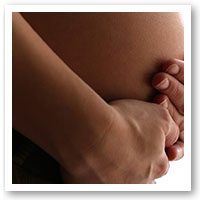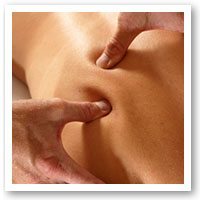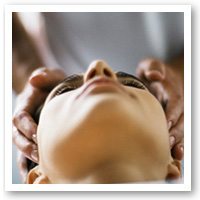Why is sore spot not necessarily the problem?
 When it comes to muscles, there are two main reasons that pain or tension is caused by another area of the body; feedback issues from nerve compression or satellite referral via active trigger points.
When it comes to muscles, there are two main reasons that pain or tension is caused by another area of the body; feedback issues from nerve compression or satellite referral via active trigger points.
Feedback
If you have tension within your joints (hips, shoulders ect..) or areas with complex small muscle mass (neck), it is likely that you have some form of feedback issue in your extremities. Feedback refers to the nerve signal returning from your extremities to your brain, not the signal from your brain to your extremities. If nerves are compressed along the pathway back to the brain, the brain senses that there is a problem in the extremity due the nerve disruption. In actual fact, the extremity may be fine, however, due to the brain believing that there is damage of some form, the area is ordered to guard itself by tightening the muscles in the area. Short term this is not problematic, however, over a prolonged period of time this excessive tension results in muscular issues in the extremity (pain or weakness).
In treating this condition, it is not uncommon for a therapist to treat the local area of pain or tension, which does provide relief, however, if the compression causing feedback issue is still present the pain or tension will return fairly promptly.
Treatment for issues relating to extremities should always be treated from the point of referral outward, treating the catalyst before the presenting problem area.
Satellite Referral
Satellite referral is an effect caused by active trigger points in a muscle. Every trigger point has a specific referral pattern; however, at times this can change and puzzle therapists and practitioners, often resulting in poor diagnosis.
When a trigger point is active and referring for a long period of time, or the problem is more compound, due to injury etc.. the referred pattern from trigger point A will activate trigger points that fall within the initial referred pattern of point A and add their own referral range to the initial trigger point B referral, thus creating a domino effect.
Treating referral pain requires good knowledge of myofacial referral patterns in the body, muscular groups and connective tissues. Trigger point therapy and sports massage excel in treating this condition, so if this sounds familiar to you, then this is another option which you may not have considered.

 Unfortunately, couples are having more and more trouble conceiving in this modern age. Once upon a time most of the blame lay with the woman, however it is currently believed that 40% rest with the male, 40% rests with the female, 10% is with both and 10% is unknown.
Unfortunately, couples are having more and more trouble conceiving in this modern age. Once upon a time most of the blame lay with the woman, however it is currently believed that 40% rest with the male, 40% rests with the female, 10% is with both and 10% is unknown. Trigger Point Therapy focuses on relieving referred pain or sensation (pain, tenderness, pins and needles, numbness and burning). A trigger point is a point of bound / taught fibres in a muscle, often referred to as muscle knots, a point of heightened tenderness or sensitivity, which prevents full usage of a particular muscle. Active trigger points have predictable referral patterns, some causing pain locally to the effected trigger point, others referring to other regions of the body. Due to this referral, a domino effect in terms of pain or injury can occur if trigger points are left untreated; this meaning an area previously unaffected by referred sensation may become affected.
Trigger Point Therapy focuses on relieving referred pain or sensation (pain, tenderness, pins and needles, numbness and burning). A trigger point is a point of bound / taught fibres in a muscle, often referred to as muscle knots, a point of heightened tenderness or sensitivity, which prevents full usage of a particular muscle. Active trigger points have predictable referral patterns, some causing pain locally to the effected trigger point, others referring to other regions of the body. Due to this referral, a domino effect in terms of pain or injury can occur if trigger points are left untreated; this meaning an area previously unaffected by referred sensation may become affected. Like all modern healthcare, Chiropractic techniques are constantly changing with the times. Just as your GP no longer applies leeches to you, Chiropractors have updates their techniques for improved results and experiences. Here are some common myths debunked…
Like all modern healthcare, Chiropractic techniques are constantly changing with the times. Just as your GP no longer applies leeches to you, Chiropractors have updates their techniques for improved results and experiences. Here are some common myths debunked…